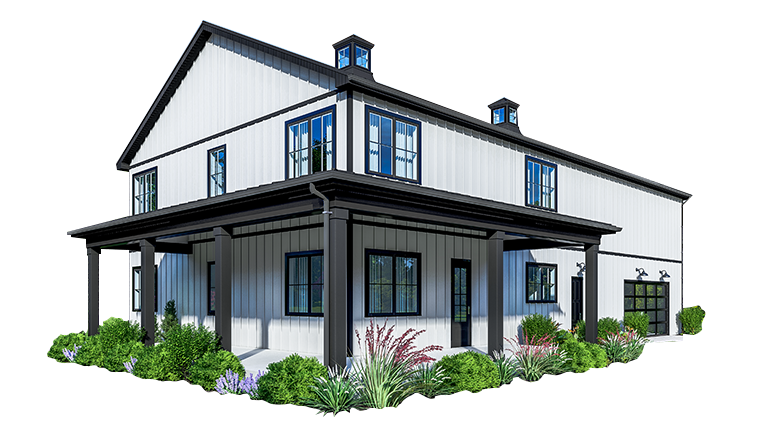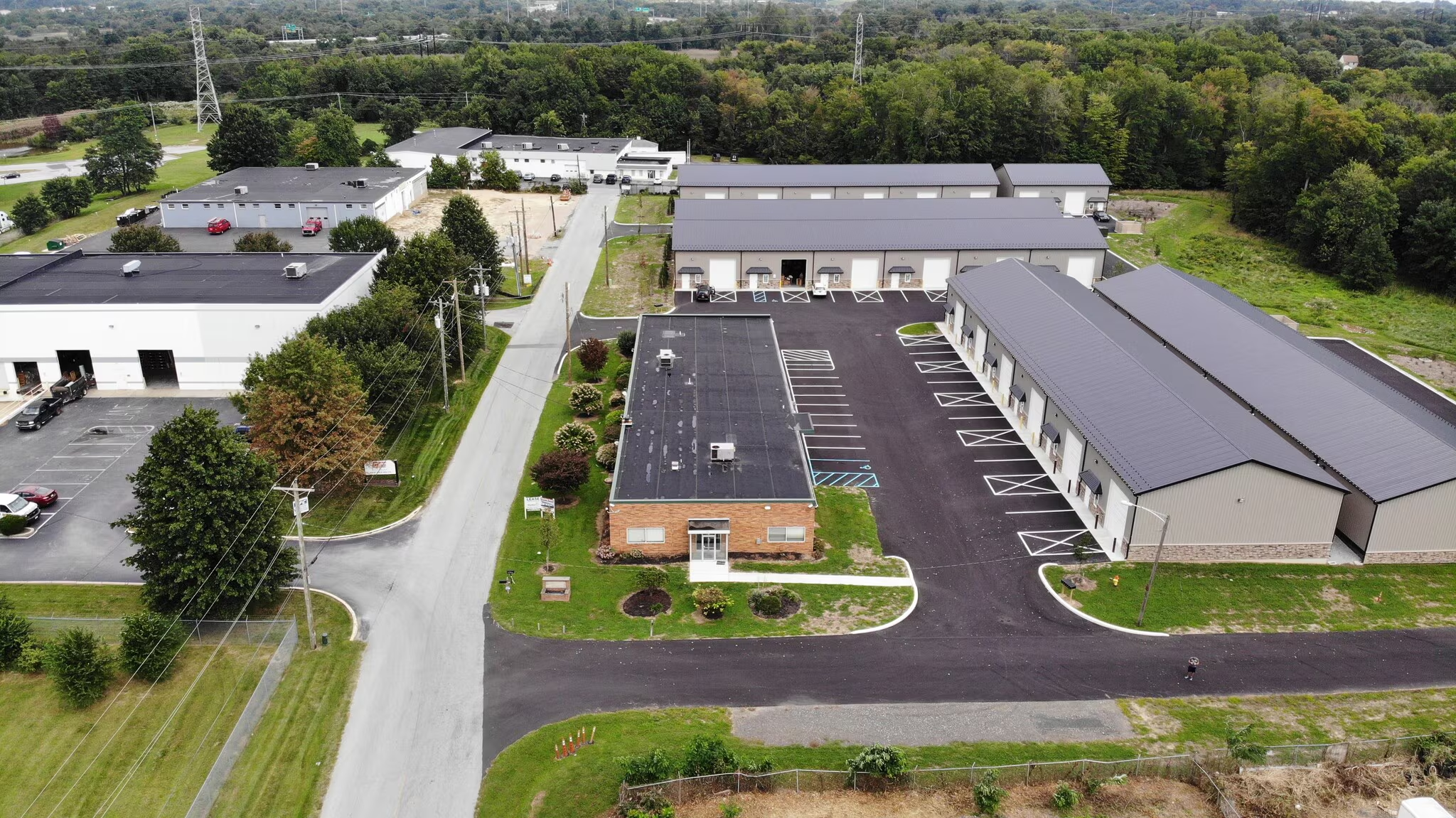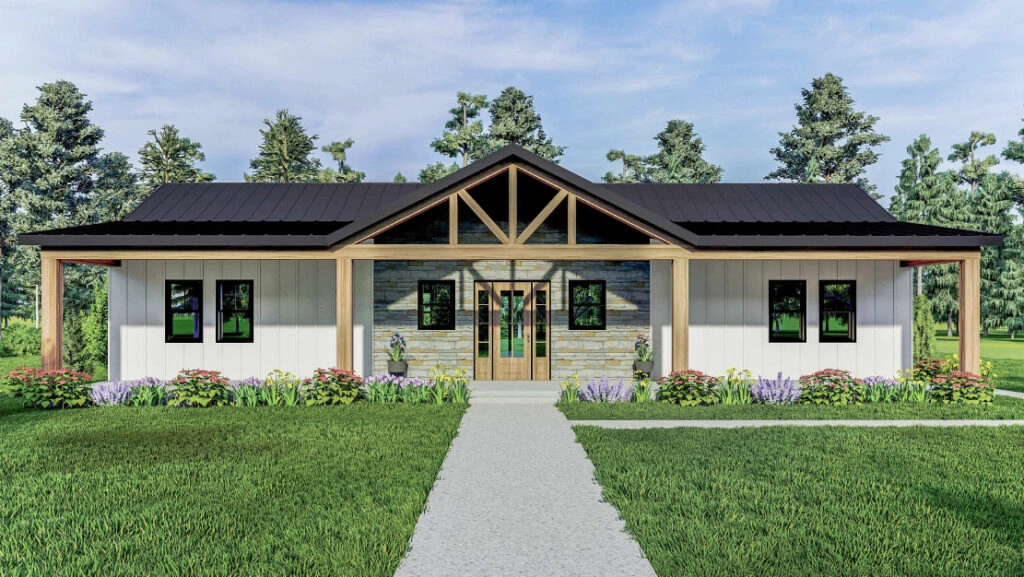For aircraft owners, investors and operators constructing an airplane hangar is more than just creating a storage space, it’s about building a safe, functional, and efficient shelter that protects your investment. A well-designed airplane hangar ensures your aircraft remains secure, accessible, and maintained in optimal conditions.
Among the many options available, a pole barn hangar has become increasingly popular due to its versatility, cost-effectiveness, and customizable design. The straightforward construction and open interior layout make pole barn hangars a practical choice for private airfields, small airports, and commercial aviation clients alike.
Unlike traditional steel frame hangars, pole barn hangars offer simplified methods while still providing spacious interiors suitable for any aircraft. At Delmarva Buildings, we specialize in designing and building high-performance pole barn airplane hangars for personal, commercial, agricultural, and municipal aviation clients. Our post-frame construction solutions deliver durability, clear-span interiors, and customizable door options tailored to specific operational needs.
What Is a Pole Barn Airplane Hangar?
A pole barn hangar is a structure built around large poles or posts anchored securely into the ground. These poles serve as the main support system, eliminating the need for deep, traditional foundations. This approach makes airplane hangar construction faster, simpler, and more economical for aircraft owners.
The roof and walls attach directly to the poles, creating wide-open interiors free of internal columns. This column-free design allows for easy maneuvering of aircraft, ground vehicles, and maintenance equipment, while providing clearance for planes with tall tail fins or wide wingspans.
Pole barn hangars can be made from wood, steel, or a combination of both, depending on preferences and local building codes. With careful planning, these hangars can be customized to meet specific operational and storage needs, including mezzanine storage, workshops, or office areas.
Benefits of a Pole Barn Airplane Hangar
Pole barn hangars offer multiple advantages:
- Cost-Effective Construction: Reduced foundation and framing expenses.
- Flexible Size and Layout: Accommodates single aircraft or multiple planes.
- Quick Build Time: Simplified airplane hangar construction shortens project timelines.
- Durability: Built to withstand harsh weather and provide long service life.
- Aesthetic Appeal: Blends with rural or suburban airfields without sacrificing functionality.
These benefits make pole barn hangars ideal for private airfields, small airports, and aviation enthusiasts seeking reliable airplane hangar designs.
Also Read: Reasons to Invest in Professional Pole Barn Building Services
Key Considerations for Airplane Hangar Construction
1. Site Selection and Foundation
The location of your airplane hangar is critical for functionality and longevity. Consider drainage, proximity to taxiways, prevailing wind patterns, and soil stability. Even though pole barn hangars don’t require deep concrete foundations like steel hangars, poles must be anchored securely in concrete footings below frost lines.
2. Airplane Hangar Designs and Size
Careful planning ensures sufficient space for aircraft, maintenance equipment, and storage. Typical pole barn hangars range from 40×60 feet for small planes to over 100 feet for larger aircraft. Ceiling height and door width must accommodate tail fins and wingspans. Additional features like mezzanine storage or office space can enhance functionality.
3. Hydraulic Hangar Doors
Hydraulic hangar doors are essential for ease of access and security. At Delmarva Buildings, clients can choose from:
- Bifold Doors: Space-saving and ideal for wide clearances.
- Hydraulic Swing Doors: Seamless operation with full sidewall use.
- Sliding/Rolling Doors: Durable, cost-effective options for basic hangars.
- Custom Sizes: Tailored to your aircraft and property layout.
Benefits include space efficiency, remote-controlled ease of use, tight seals for security, and durability against wind and environmental exposure.
4. Airplane Hangar Lighting
Proper airplane hangar lighting is critical for safe operations and maintenance. Combine natural light from windows or translucent panels with energy-efficient LED lighting. Task lighting supports precision work, while emergency lighting ensures compliance with safety standards.
5. Ventilation and Insulation
Good airflow prevents moisture buildup, protecting avionics, paint, and metal components. Ridge vents, soffit vents, and large operable windows encourage circulation. Insulation maintains comfortable interior temperatures and safeguards sensitive systems year-round.
6. Flooring Options
The airplane hangar floor must be strong, easy to maintain, and resistant to fuel or oil spills. Concrete with epoxy or sealed coatings provides chemical resistance and easy cleaning. Slight drainage slopes channel spills away from aircraft and personnel.
7. Utilities and Amenities
Modern pole barn hangars often include:
- Electrical outlets for tools and charging equipment
- Compressed air lines for pneumatic tools
- Heating and cooling systems
- Internet and communication wiring
Delmarva Buildings also offers fully custom layouts, insulated interiors, radiant floor heat, wash bays, offices, and security add-ons for complete turnkey functionality.
Also Read: How to Design a Pole Building for Maximum Natural Light
Planning Your Pole Barn Airplane Hangar Construction
Successful airplane hangar construction requires professional guidance. Architects or builders experienced with pole barn hangars ensure compliance with building codes, zoning regulations, and aviation authority requirements.
Planning for current and future needs, including aircraft expansion, storage, and workspace, maximizes usability. Custom airplane hangar designs can include mezzanine storage, workshops, or office spaces tailored to operations.
Delmarva Buildings has completed hangars at municipal airports, private airparks, farm strips, and coastal airfields, handling zoning, permits, and coordination with airport authorities for a smooth construction process. Whether for private owners, crop duster operators, flight schools, or investment purposes, Delmarva Buildings delivers tailored airplane hangars built for durability, efficiency, and long-term value.
Conclusion
Designing a pole barn airplane hangar requires careful planning, from site selection to doors, lighting, and flooring. These hangars offer a cost-effective, flexible, and durable alternative to steel structures. A well-designed hangar protects your aircraft, supports operations, and keeps your airfield professional and efficient.
Ready to start your airplane hangar project? Contact Delmarva Buildings today to discuss your design, get expert guidance, and get a quote for your pole barn airplane hangar.





